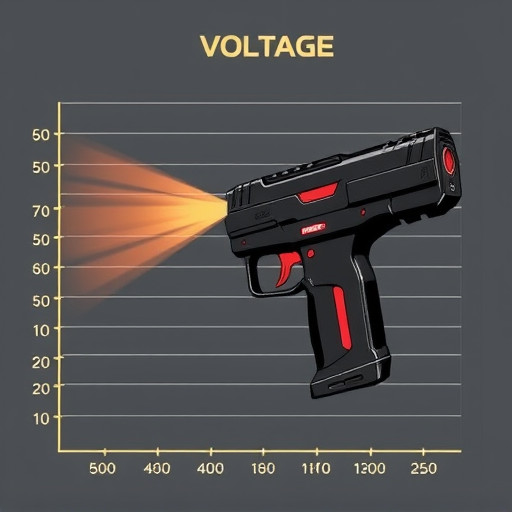A stun gun's effectiveness isn't solely determined by its voltage, but a stun gun voltage chart allows consumers to compare different models and make informed decisions. While higher voltage generally indicates more power, advanced technologies can enable effective lower-voltage devices with higher current and longer pulse duration. By considering voltage alongside current strength, duration, and frequency, users can select a stun gun suitable for diverse scenarios, balancing power with versatility for optimal personal safety.
“Uncover the mysteries behind stun gun voltage and its impact on effectiveness. Understanding the electrical power of these self-defense tools is crucial for informed decision-making. This article navigates through the complexities, offering insights into how voltage translates to real-world performance.
We’ll explore the connection between voltage and stun effectiveness, present a comprehensive stun gun voltage chart, and guide you in deciphering your device’s specifications. By the end, you’ll be equipped with knowledge to choose the right stun gun for your needs.”
Understanding Stun Gun Voltage: What Does it Mean?
Stun guns, also known as electroshock weapons, deliver a powerful electric shock that temporarily incapacitates the target. The primary measure of their effectiveness is voltage—the force behind the electrical current. Understanding stun gun voltage involves grasping how it relates to the device’s power and its impact on the human body. A stun gun voltage chart can provide insights into different models and their respective voltage outputs, making it easier for consumers to compare options.
Voltage, in this context, refers to the electric potential difference between two points, measured in volts (V). Higher voltage means more energy is delivered, resulting in a stronger stun effect. However, it’s not the only factor determining effectiveness; current strength, duration, and frequency also play significant roles. A stun gun with lower voltage but higher current density can still be highly effective in neutralizing an attacker momentarily, making it crucial to consider these interconnected aspects when evaluating stun gun performance.
The Relationship Between Voltage and Stun Effectiveness
The relationship between a stun gun’s voltage and its effectiveness is complex. While higher voltage generally indicates greater potential for a powerful stun, it’s not the sole determinant. A stun gun voltage chart might show that a device with a lower voltage can still be effective against an attacker if designed with advanced technologies like enhanced electric field distribution or targeted muscle activation. Conversely, a higher-voltage stun gun may not always ensure success due to factors like the distance between the user and the target, body type of the assailant, and even environmental conditions.
Effectiveness also hinges on the stun gun’s current and pulse duration. A stun device with a high voltage but low current might produce a momentary shock, causing the target to stumble but not necessarily incapacitating them for an extended period. In contrast, a lower-voltage stun gun with a higher current and longer pulse duration can lead to longer-lasting disorientation and muscle paralysis, rendering the attacker helpless. Thus, choosing the right stun gun involves striking a balance between voltage, current, and other technological features to ensure maximum effectiveness in various scenarios.
Creating a Stun Gun Voltage Chart: A Comprehensive Guide
Creating a Stun Gun Voltage Chart offers a clear and concise way to compare different models’ performance capabilities. This visual tool is particularly useful for consumers looking to make informed decisions when purchasing self-defense equipment. By plotting stun gun voltage against effectiveness metrics, such as shock range, discharge time, and current strength, users can quickly identify devices that best suit their needs.
A well-designed chart should include various stun gun models, each represented by data points showing its voltage output and corresponding effectiveness. This allows for direct comparisons, enabling folks to choose based on personal factors like body size or specific threat scenarios. Moreover, such charts often include additional columns for weight, battery life, and features, providing a comprehensive overview that extends beyond raw voltage measurements.
Deciphering the Numbers: Interpreting Your Stun Gun's Specifications
When shopping for a stun gun, one of the most crucial factors is understanding its voltage and how it impacts effectiveness. Deciphering the numbers on your stun gun’s specifications involves more than just looking at the figure. A stun gun voltage chart can help users grasp the relationship between voltage and power output, allowing them to make informed decisions based on their needs.
Each stun gun manufacturer uses a slightly different measurement for voltage, which can be confusing. Some list peak voltage, while others provide average or continuous voltage. To compare apples to apples, look for specifications that include a stun gun voltage chart comparing these measurements. Additionally, keep in mind that higher voltage doesn’t always translate to greater effectiveness; it’s the energy delivered per pulse that matters most.
